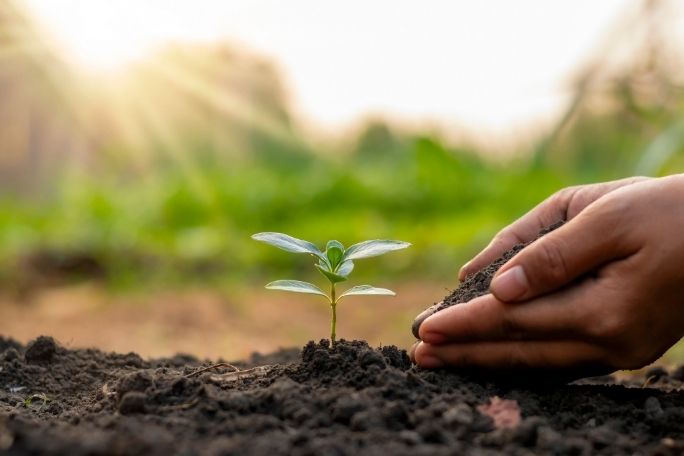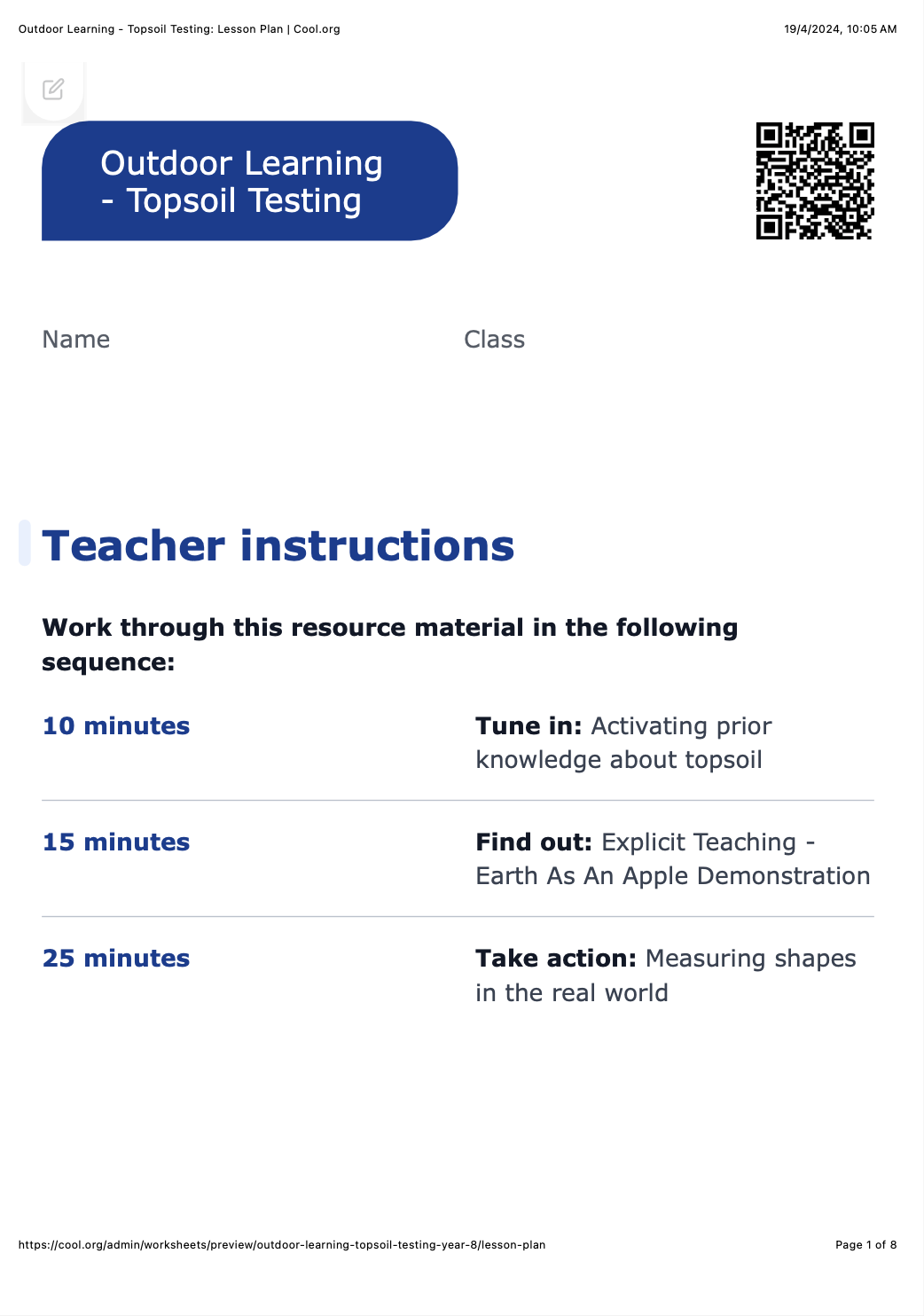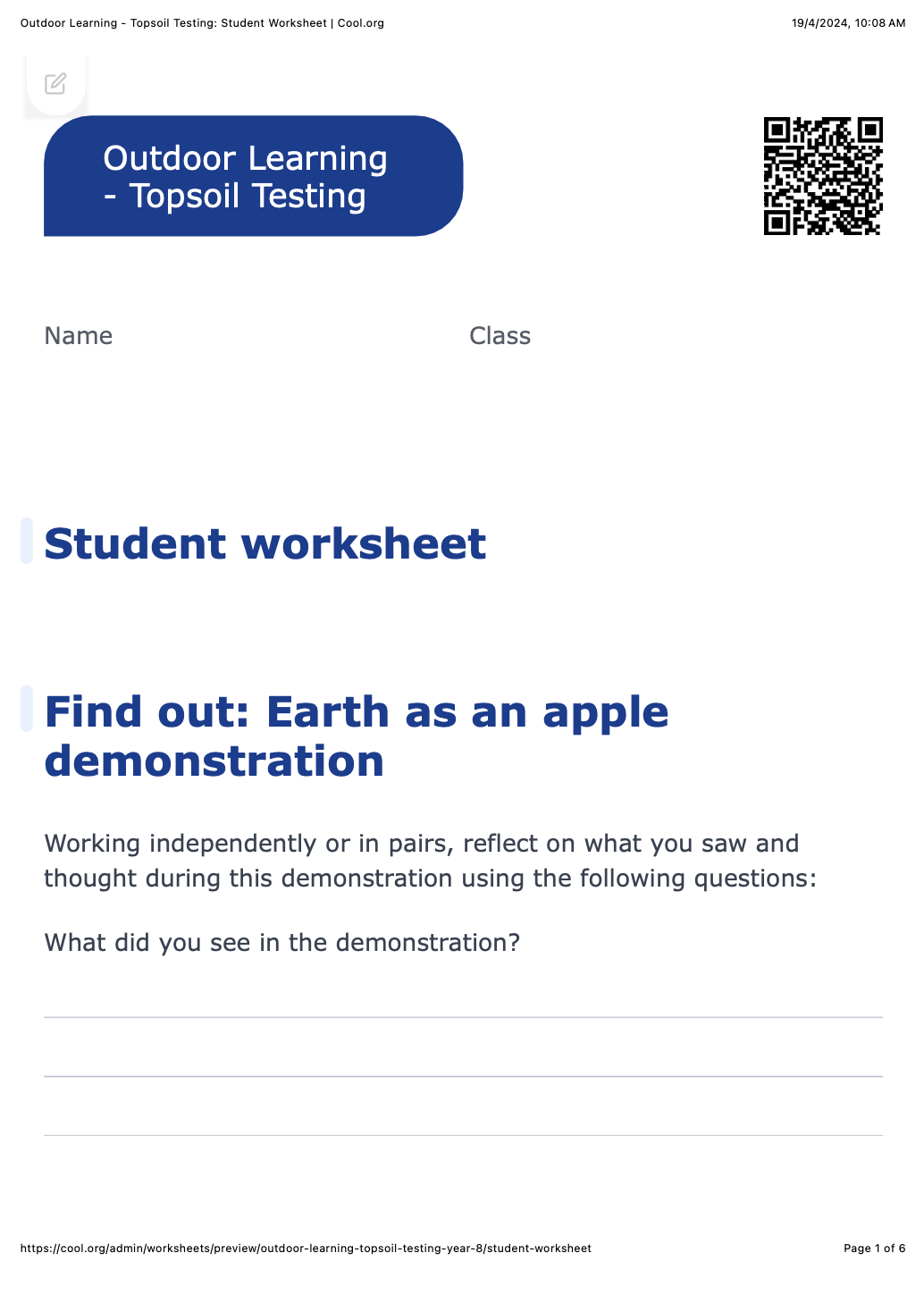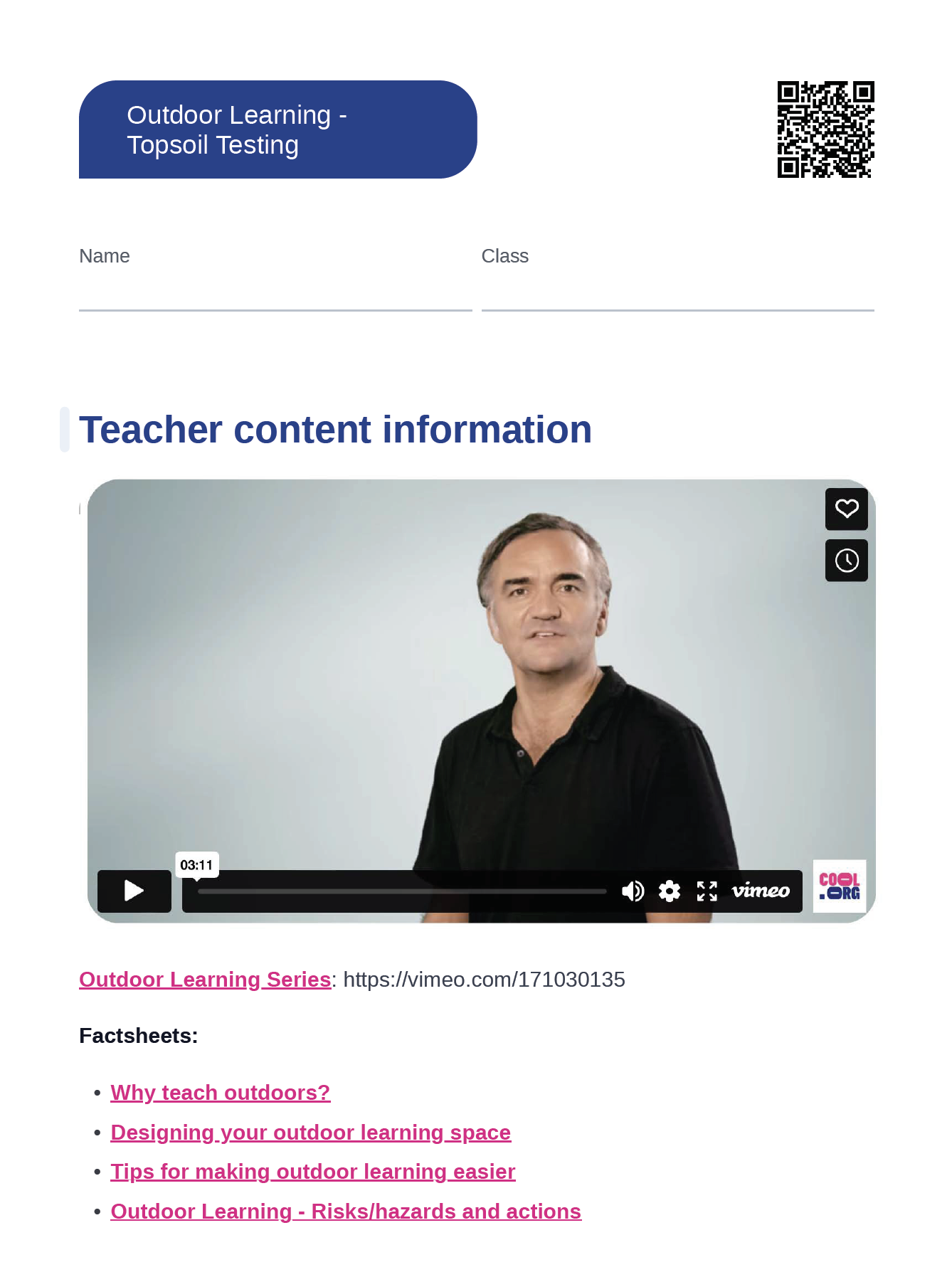Lesson summary
Students investigate the role of topsoil and the importance of topsoil to food production and biodiversity. They analyse the class data and work in groups to create a map of topsoil quality at their school and to make suggestions for improving topsoil quality.
Learning intentions:
Students will...
- understand what topsoil is and why it is important to humans and our environment.
Success criteria:
Students can...
- identify the quality of topsoil at their school and recognise actions that can be taken to improve the quality of topsoil
- apply appropriate mathematical theories to solve for volume
Lesson guides and printables
Curriculum links
Select your curriculum from the options below.
Lesson details
Curriculum mapping
Australian Curriculum (v9.0) content descriptions:
Year 8 Mathematics:
Students learn:
- the interconnections between human activity and geomorphological processes, and ways of managing distinctive landscapes (AC9HG8K04)
Syllabus outcomes: GE4-1, GE4-2, GE4-3, GE4-7, GE4-8.
General capabilities: Critical and Creative Thinking.
Cross-curriculum priority: Sustainability.
Relevant parts of Year 8 achievement standards:
By the end of Year 8, students describe the effects of human activity or hazards on environments.
Resources required
- Apple
- Chopping board
- Device capable of presenting a website to the class
- Guide – Earth as an apple – demonstration instructions
- Knife
- Map of the school
- Student Worksheet – one copy per student
- Each group will also need:
- one printed A4-sized map of the school for each group
- one copy of the Topsoil Testing Record Sheet
- one spade/shovel for each group
- one tape measure
- pen/pencil.
Skills
This lesson is designed to build students’ competencies in the following skills:
- creativity
- critical thinking
Additional info
Level of teacher scaffolding: Medium - oversee activity and facilitate discussion.
This lesson is designed to be taught outside. It contains all the tools required for students to reap the benefits of being outdoors while learning the outcomes of the Australian Curriculum. By spending time outdoors and connecting to nature, students are more likely to care for and conserve nature as adults.
This is an original Cool+ lesson.
Related professional learning
Introduction to Secondary STEM
Quick summary: This course will help you understand the essential foundations of STEM teaching and learning and provide opportunities to help build knowledge, skills and confidence to take on STEM in your classroom.




Welcome back!
Don't have an account yet?
Log in with:
Create your free Cool.org account.
Many of our resources are free, with an option to upgrade to Cool+ for premium content.
Already have an account?
Sign up with:
By signing up you accept Cool.org's Terms and Conditions(Opens in new tab) and Privacy Policy(Opens in new tab).